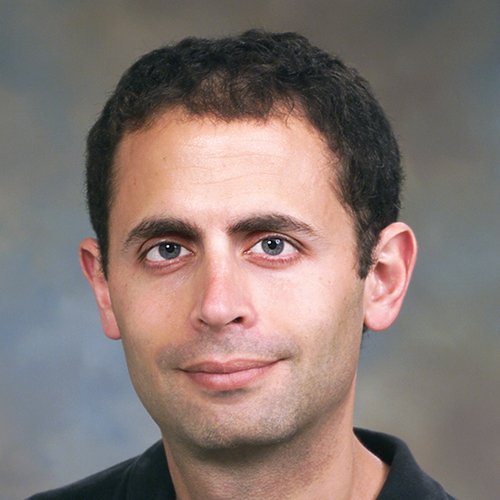Cravatt lauded as âgem of the scientific communityâ for his work on activity-based protein profiling
of The Scripps Research Institute in La Jolla, Calif., has been named the winner of the ÂéķđīŦÃ―ÉŦĮéÆŽ and ÂéķđīŦÃ―ÉŦĮéÆŽ Biology/Merck Award.
Cravatt, professor and chair of the chemical physiology department at Scripps, received this award based on his groundbreaking contributions to the development and application of post-genomic methods for the functional annotation of mammalian enzymes. “Cravatt pioneered the use of the now widely practiced activity-based protein profiling technology, which utilizes site-directed chemical probes to profile active enzymes in complex proteomes,” said of Stanford University, who nominated Cravatt for the award.
Most proteomic technologies measure protein abundance and therefore provide only an indirect estimate of protein activity. Cravatt’s work has led to the development of a chemical strategy to profile the functional state of enzymes through the development of active site directed probes, known as activity-based protein profiling, or ABPP.

I am tremendously honored to receive the 2014 ASBMB-Merck Award, which is a tribute to the many talented and hardworking graduate students, postdoctoral fellows and collaborators with whom I have had the pleasure of working during my career at TSRI.
—BENJAMIN CRAVATT
of the University of California, San Diego, describes Cravatt as “a star at the chemistry-biology interface and a worthy recipient of this important award.”
Cravatt attended Stanford University, earning a B.A. in history and a B.S. in biological sciences. He then pursued a Ph.D. at The Scripps Research Institute under the mentorship of and . At Scripps, he became an assistant professor in 1996 and rose through the ranks to become professor and chair in 2007.
“His love of science is overflowing and contagious. If you haven’t had the chance to hear him speak about his work, there’s nothing I’d recommend more highly,” says of Stanford University.
Cravatt will receive his award at the conference in San Diego. He will present his award lecture at 2:55 p.m. Tuesday, April 29, in Room 6A of the San Diego Convention Center.
Enjoy reading ASBMB Today?
Become a member to receive the print edition four times a year and the digital edition monthly.
Learn moreGet the latest from ASBMB Today
Enter your email address, and weâll send you a weekly email with recent articles, interviews and more.
Latest in People
People highlights or most popular articles

Meet the 2025 SOC grant awardees
Five science outreach and communication projects received up to $1,000 from ASBMB to promote the understanding of molecular life science.

Unraveling cancerâs spaghetti proteins
MOSAIC scholar Katie Dunleavy investigates how Aurora kinase A shields oncogene c-MYC from degradation, using cutting-edge techniques to uncover new strategies targeting âundruggableâ molecules.

How HCMV hijacks host cells â and beyond
Ileana Cristea, an ASBMB Breakthroughs webinar speaker, presented her research on how viruses reprogram cell structure and metabolism to enhance infection and how these mechanisms might link viral infections to cancer and other diseases.

Understanding the lipid link to gene expression in the nucleus
Ray Blind, an ASBMB Breakthroughs speaker, presented his research on how lipids and sugars in the cell nucleus are involved in signaling and gene expression and how these pathways could be targeted to identify therapeutics for diseases like cancer.

In memoriam: William S. Sly
He served on the ÂéķđīŦÃ―ÉŦĮéÆŽ and ÂéķđīŦÃ―ÉŦĮéÆŽ Biology Council in 2005 and 2006 and was an ASBMB member for 35 years.

ASBMB committees welcome new members
Members joined these committees: Education and Professional Development, Maximizing Access, Meetings, ÂéķđīŦÃ―ÉŦĮéÆŽ, Public Affairs Advisory, Science Outreach and Communication, Student Chapters and Women in Biochemistry and ÂéķđīŦÃ―ÉŦĮéÆŽ Biology.

